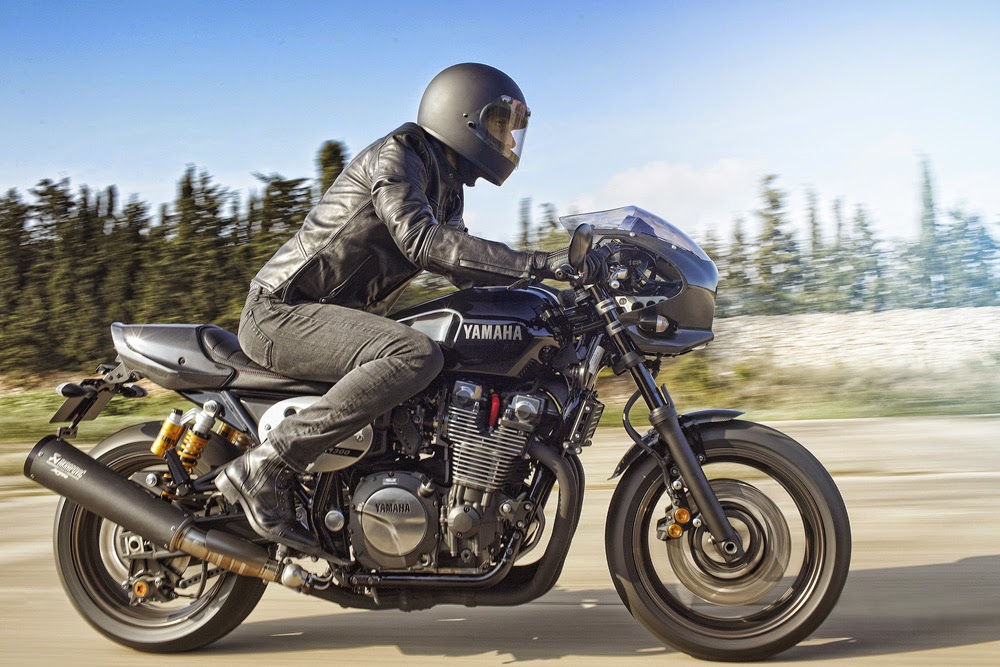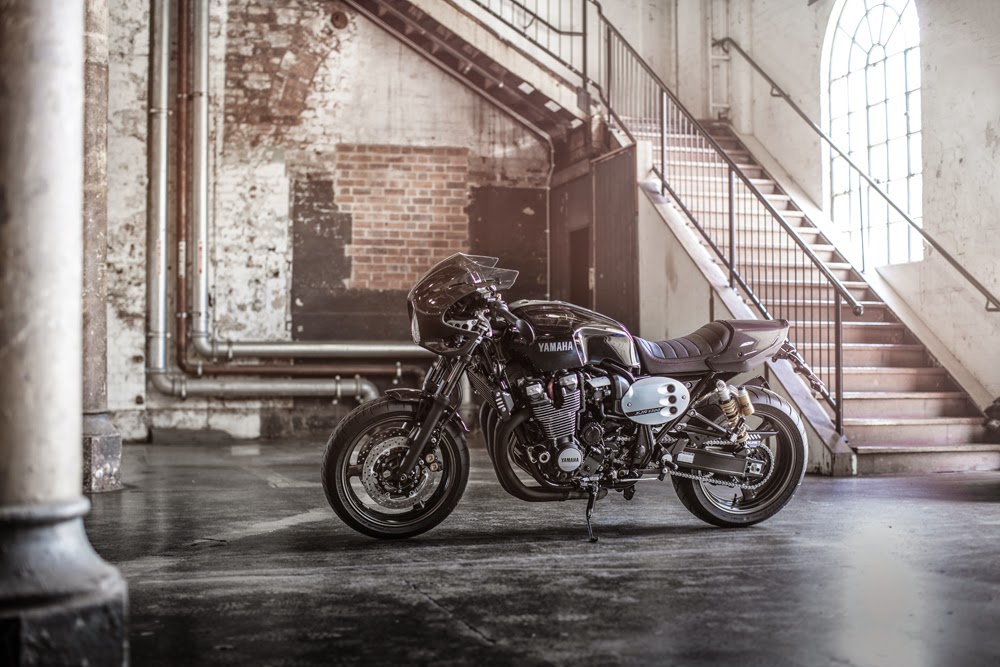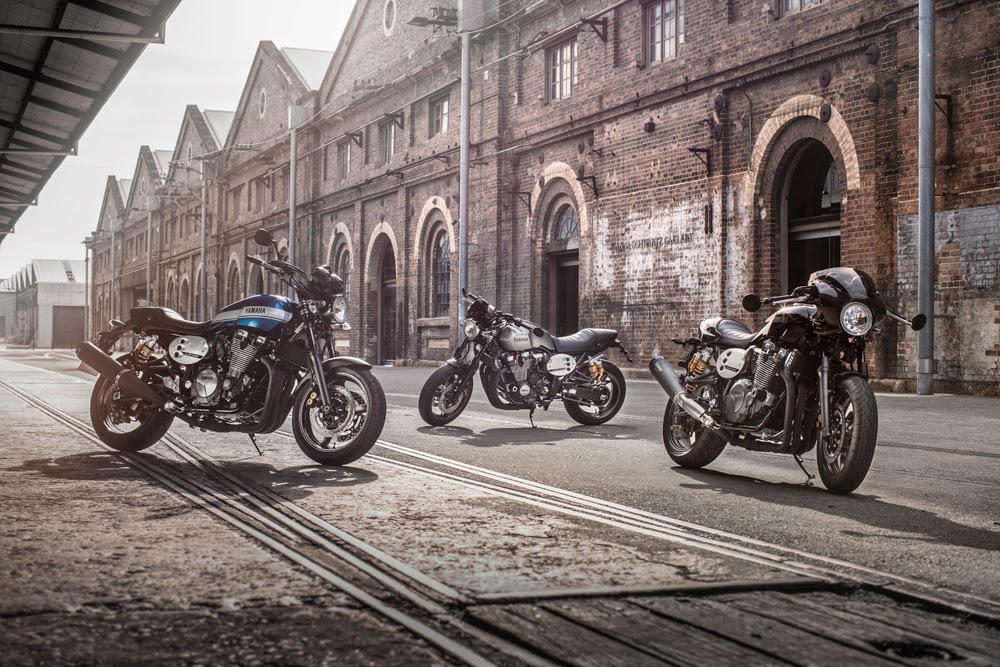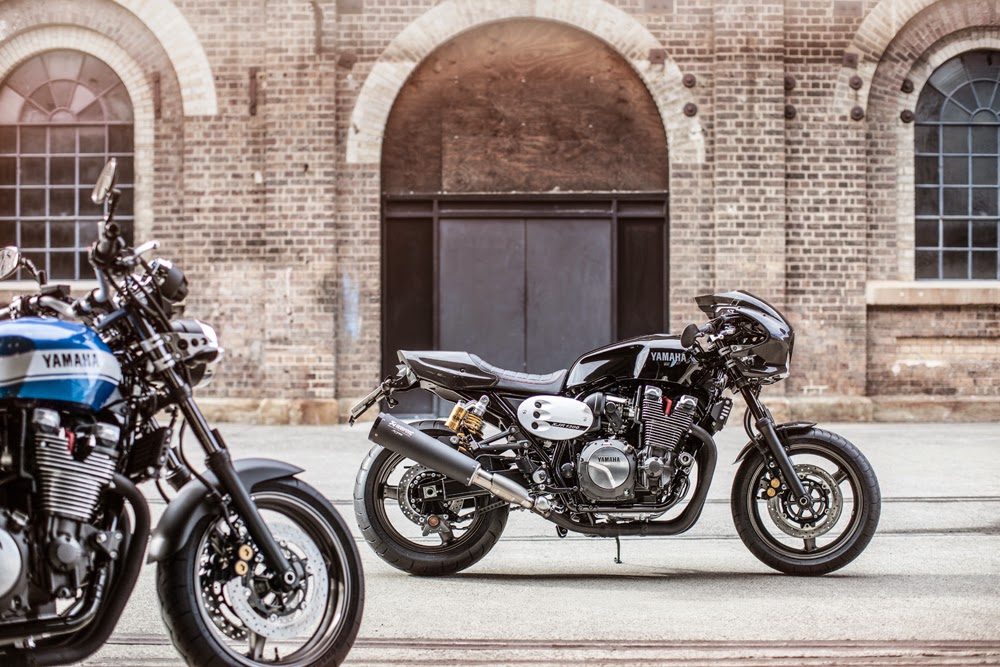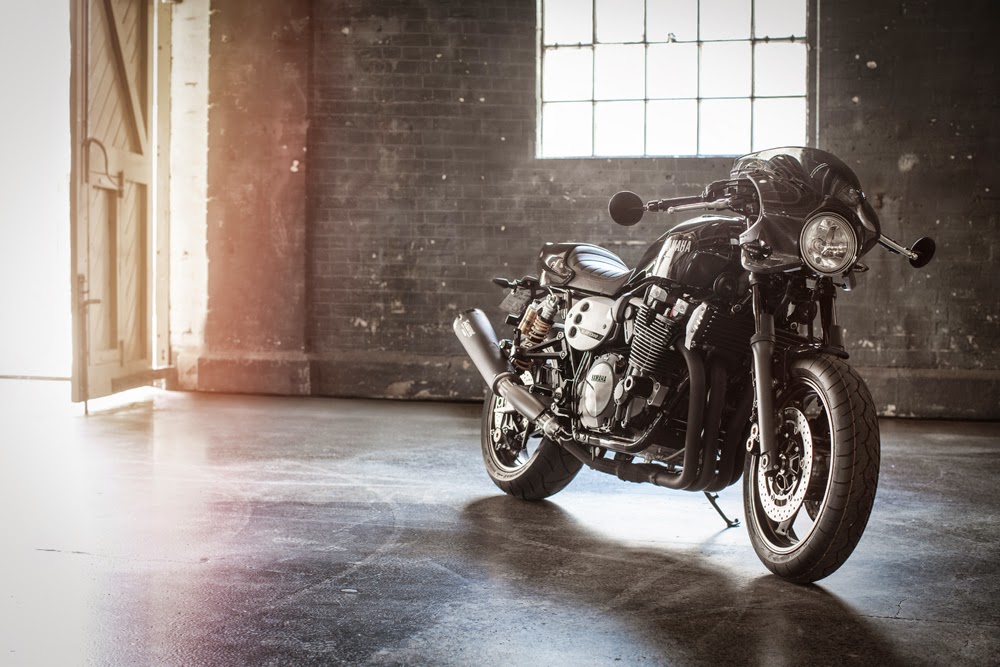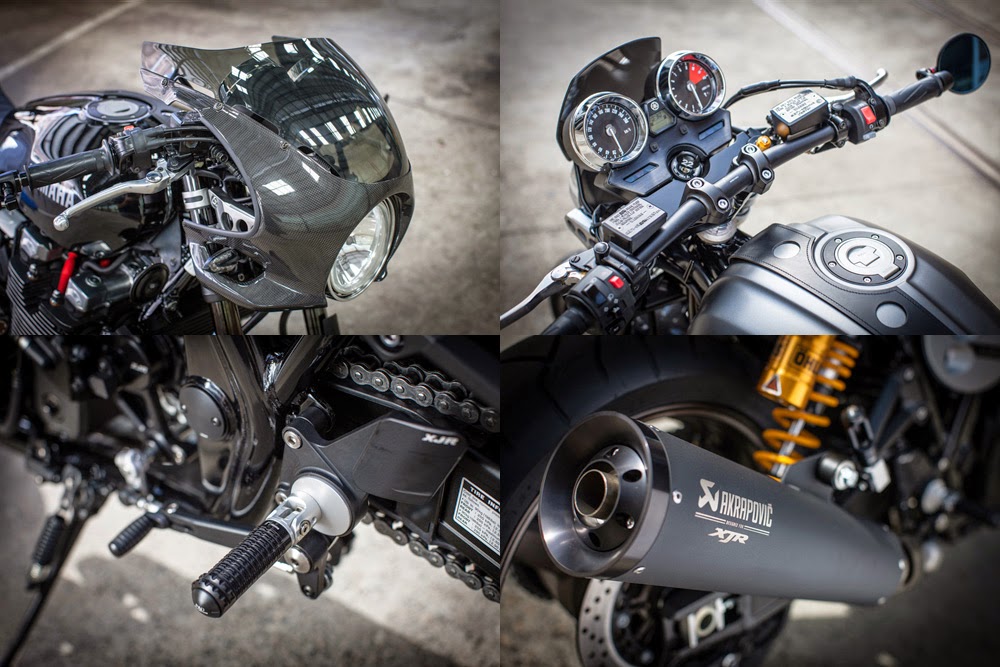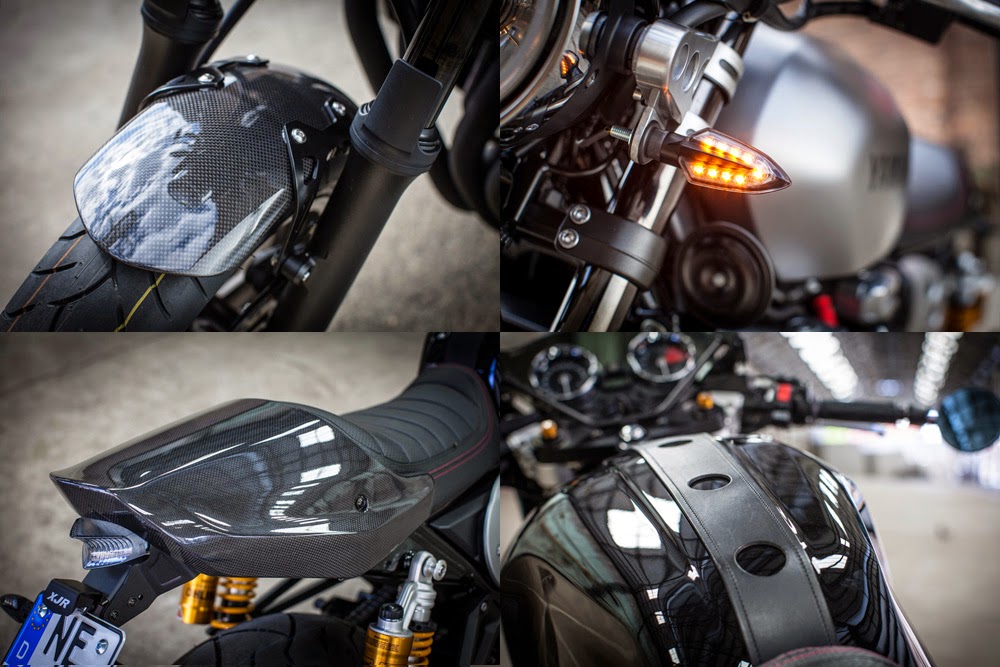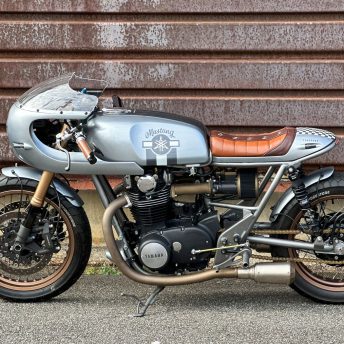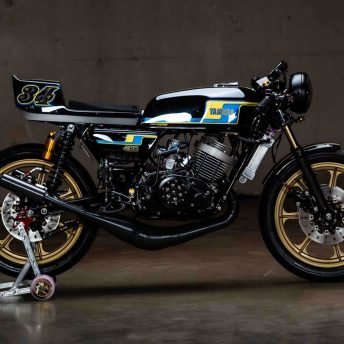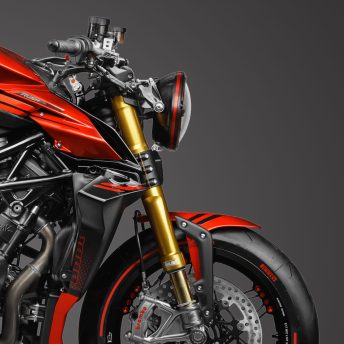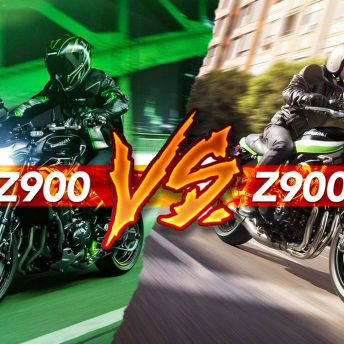I’ve been covering the Yamaha Yardbuilt series of custom bikes for some time now and have really enjoyed the projects they’ve collaborated on. If you follow Return of the Cafe Racers on Instagram you may have noticed that I was recently invited by Yamaha to attend the global launch of the 2015 Yamaha XJR1300 Racer in Sydney. The XJR1300 Racer is Yamaha’s newest addition to its “Sport Heritage” series where it joins the SR400 and the XV950 ‘Bolt’. The XJR1300 Racer is a variation of the standard XJR1300 with design features inspired by current trends is the custom motorcycle, much like BMW’s R Nine T. A few days ago I jumped on a plane and met up with the other bloggers and journalists invited to the launch where we spent 3 fun days getting to know the new Yamaha XJR1300.
Our itinerary began with a presentation on the 2015 XJR1300 by Yamaha product manager Shun Miyazawa at the Deus Ex Machina “House of Simple Pleasure” in Camperdown, Sydney. Shun explained the development process of the 2015 XJR and it’s variant the XJR ‘Racer’. While much of the bikes engineering and mechanics remain closely aligned with its predecessors the 2015 version has undergone styling changes based on an “Old is New” approach. What this means, in a nut shell, is that Yamaha has recognised the appeal of classically styled motorcycles in todays motorcycling community and has attempted to create a bike that will appeal directly to this audience, and I think they’ve done a pretty good job of it.
Back in 1995 when the XJR was first released it fell into the naked sports category of bikes. This basically meant they removed the front fairing from the design leaving the sports style tail end, a design I’ve never really been fond of. It’s like wearing a shirt with only one sleeve rolled up, it simply doesn’t look right. Thankfully Yamaha looked much farther back than the nineties for their design influences. It was the classic lines and forms of the XS Eleven that they used as an example for the development of the new XJR. The balanaced horizontal line of the XS Elevens tank and seat, its slimmer profile and its simple headlight and instrument cluster. The new XJR’s tank is lower and slimmer dropping 6 litres in capacity and exposing the engine to the rider. The tail is shorter and completely covered in leather with a Cafe Racer style bump at the end and the sub frame sits 10cm lower bringing the rider closer to the bike and the road.
Black is the new black! The XJR is covered in black bits. A blacked out engine, black frame and swing arm, black exhaust and the first entirely black forks I’ve ever seen. It also features very few visible plastic bits, opting instead for milled or pressed alloy parts like the drilled headlight stay, side number plate airbox cover and exhaust heat shields. Paint choices are, you guessed it, black, flat metallic grey and a very nice “power” blue (my personal favourite).
“Born for Speed”. The XJR1300 Racer is of course the bike that really gained my interest. It transforms the XJR1300 into a more aggressive looking and riding, Cafe Racer styled beast. The big changes come in the form of a carbon fibre front “race” cowl, a carbon fibre short fender, a carbon seat cowl and a set of low clip on handlebars. When I first saw photos of the racer I was worried that the shape of the front cowl was too complex, but seeing it in the flesh changed that opinion straight away. During the presentation at Deus the XJR Racer on display had been kitted out with the full range of Yamaha catalog accessories. LED indicators, bar end mirrors, rear set foot pegs, billet engine dress up parts and an Akrapovic muffler. It looked the business and you could easily see how its design was influenced by the Yardbuilt series, especially since Yamaha had also flown them over for the event! As well as getting to see the new bike I was lucky enough to get a close up look at the ‘Eau Rouge‘ from Deus Ex Machina Italy and Keino Cycles ‘Rhapsody in Blue” and yes they look just as good in the flesh as they do in the photos.
The following day we went out on our ride. The bikes we were given were in their “from the dealership” form so all of the fancy bits had been removed. I started out the day on an XJR Racer and agreed with Ross from The Bike Shed, who had a standard XJR ,that we’d swap a few times during the day to get a feel for both versions. While I wasn’t too fussed about the bulkier, incandescent indicators or the stem mounted mirrors on the stock Racer, the mid set foot pegs were a little confusing. With such a forward leaning riding position it seemed to me that the rear sets should be a standard feature of the Racer as the mids started to become a tad uncomfortable after our first 100kms. The bikes steering was direct and the whole package felt well balanced and while the power delivery wasn’t as aggressive as I was expecting, there was plenty of it. We spent the first half of the day on some pretty relaxed roads and got rained on a fair bit, but that didn’t stop me from enjoying it…especially as I was one of the only riders with a full faced lid. After stopping for lunch our Yamaha ride leader told us the best part of the route was next. We headed from the coast into the hills where the roads turned into a mixed bag of tight bends and long sweepers. The Racer cut a very nice line allowing me to really lean in tight and because of it’s low height you really feel like your skimming the surface of the road on every turn. The stock XJR had completely different steering dynamics with its high/wide tapered bars, but when I positioned myself right up on the tank with my elbows high I had my toes scrapping on every other corner.
I’m not about to start telling you about the power-to-weight ratio or how many miles the XJR gets to the gallon, but what I will say is that it was a great bike to ride. The XJR Racer spec sheet is an impressive list of go fast facts sure to please any die hard fan of the XJR series. While the bike boasts a huge 1300cc engine it’s power delivery is smooth and manageable. The air-cooled, parallel 4 produces around 98bhp and just under 110Nm of torque, which was capable of rocketing me from zero to “I’d lose my license if a cop saw me now” in no time at all. The brakes worked (phew), the suspension was a little stiff, but is fully adjustable and there weren’t any odd wobbles or unusual quirks to speak of. As a daily ride it’s probably a little larger than I’d like and the engine produced a fair bit of heat, but I wouldn’t hesitate lane splitting on the XJR to avoid the latter and despite the former.
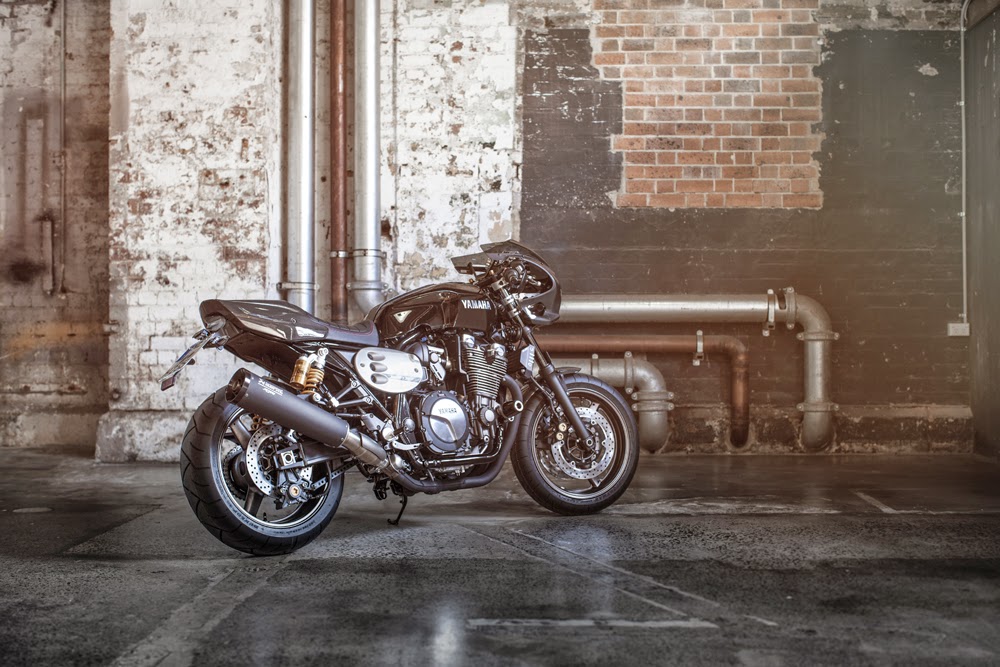

“In terms of style, we were inspired by the design of the late ‘70s and ‘80s, with simple and pure shapes and authentic materials. The DNA is also racing inspired. Long and narrow tank, dynamic seat, race number plate with intakes… and we thought a lot about the customising. This XJR is an easy base to pimp!” – Yamaha Motorcycles
With customisation being one of the key selling points for the XJR300 Racer, Yamaha are working with 6 different workshops in 2015 to produce 6 new “Yardbuilt” XJR’s. The workshops taking part are Copenhagen’s Wrenchmonkees, Portugal’s ItRocks!Bike, Numbnut Motorcycles in Amsterdam, those crazy Spaniards at El Solitario, Iron Heart Denim UK and Rough Crafts in Taiwan. These bikes will then form the basis for a range of custom “bolt on” parts for the XJR1300. Along with the 30 genuine accessories offered by Yamaha these parts should provide XJR enthusiasts with enough options to create their own custom variation with ease. Now that’s something I’m really looking forward to seeing!
XJR1300 Racer Yamaha Yardbuilt
